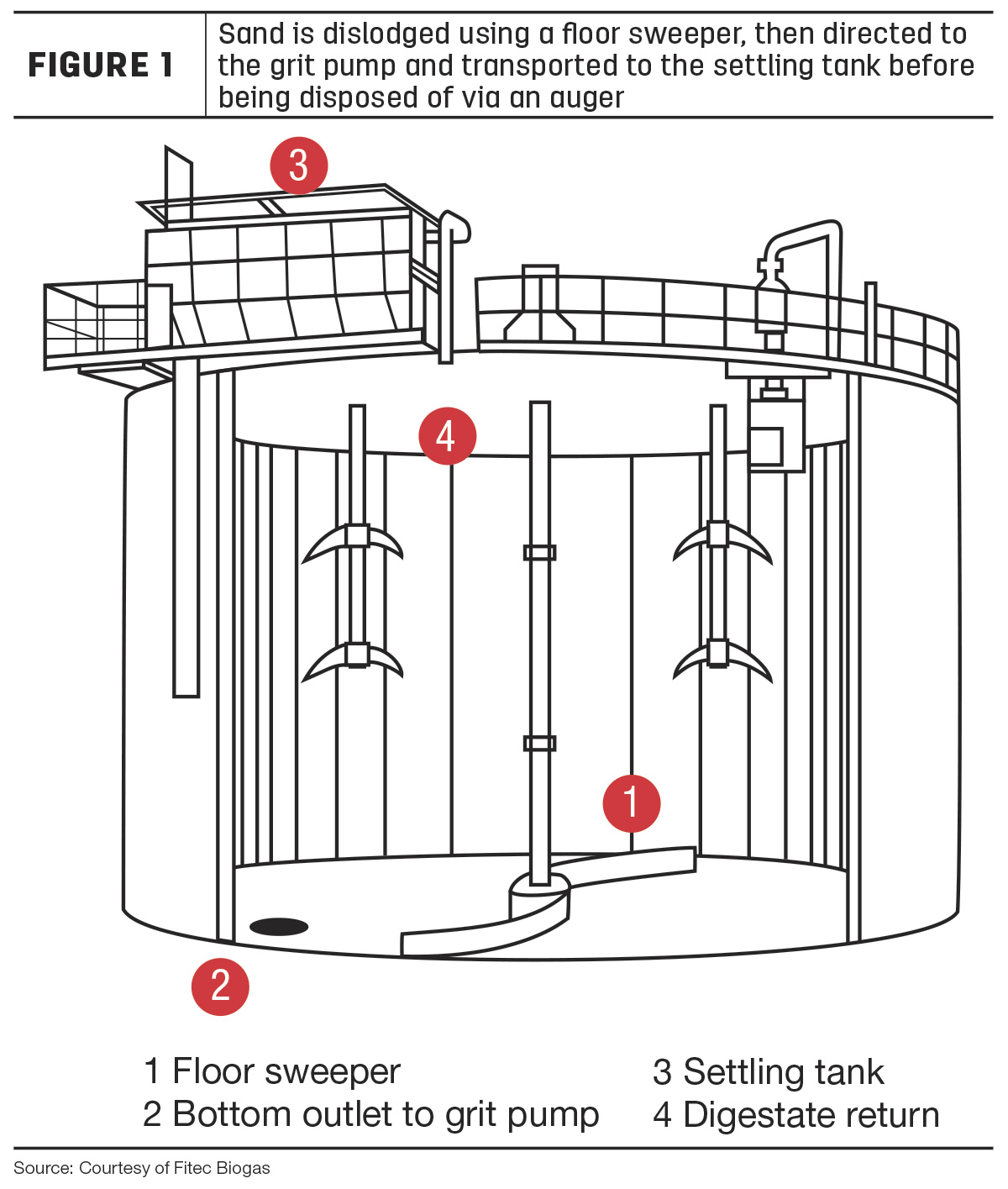As sustainable and green initiatives in various farming sectors become the norm, dairy farms are adopting the innovations available to the industry. The scale and nature of the industry have necessitated various alternative approaches to operations to achieve climate change targets and curb methane emissions. A key technology solution in this respect is the use of anaerobic digesters to convert cow manure into valuable biogas.
While this cutting-edge technology significantly addresses an important issue relating to climate change and renewable energy, the sand that is often used as bedding can pose an implementation challenge. The trouble stems from the fact that standard digesters are not designed to cope with the increased volume of sand that comes with manure as a feedstock. As a result, operations will inevitably need to shut down for maintenance and cleaning, fully stopping the production process and hindering the overall return on investment.
Let’s explore this concept and the solution in more detail.
Understanding the mechanics of digesters
Dairy digesters are what allow the conversion of manure into valuable energy sources. However, their efficiency is often compromised by the presence of sand in the manure. Even after the primary sand separation step, a significant portion, approximately 5% to 10% by weight, remains in the manure. This proportion is considered a high amount of non-digestible material and can negatively impact biogas production.
This non-digestible fraction gradually accumulates within the digester, reducing the available volume for energy-producing feedstock. Consequently, the input capacity of the digester decreases, resulting in a decline in energy production.
The sand removal process from manure
The use of sand as bedding for dairy cows is a common practice in the industry. However, when sand is mixed with cow manure, it can pose operational challenges for dairy digesters. The extraction of sand from manure within a digester typically involves a mechanical separation process. This process can differ based on the specific type of digester and equipment involved, but it generally comprises the following stages:
- Manure is first pumped into a primary separation system where heavier materials, such as sand, settle to the bottom.
- The separated sand is then typically washed and scrubbed to remove any remaining organic material.
- After washing, the sand is dried using a combination of mechanical and thermal methods. Some systems use large centrifuges or screw presses to remove moisture, while others rely on drying beds or heated air.
- Upon achieving the desired level of dryness, the sand can be recycled as bedding for the farm or sold for application in other sectors.
- Finally, the remaining liquid, which contains the organics, is then pumped into the digester for anaerobic digestion to produce biogas.
Issues associated with the process
The sand removal process is fraught with its own set of challenges, predominantly related to time consumption and financial investment.
- Facilities that use existing primary separation systems need to account for the additional water coming in with the organics as well as sand build-up. Designs then require a larger digester tank, resulting in higher initial investment in infrastructure.
- The cleanout process is costly, ranging from $100,000 to $150,000, and involves multiple steps which can take up to two weeks to complete. This must happen frequently to keep the digester operating at peak capacity.
- During these cleanup periods, time must be accounted for both the shutdown and ramp-up of the energy-producing biological system, creating a significant loss of revenue, time and operational efficiency for at least a month’s time.
Despite these challenges, the use of sand as bedding for cows is likely to continue given its cost-effectiveness and efficiency from a farming perspective. That also means that despite being a viable, sustainable option for dairy farmers, traditional digester technology may not be as appealing due to the roadblocks that currently face the process and production in the industry.
Introducing the self-cleaning digester system
How can the process change for the better? The answer lies in a more robust and reliable system designed to be capable of managing multiple feedstocks and contaminants, including sand, in an efficient way. Self-cleaning digesters have been in use on dairy farms in Canada, where they co-digest manure and food waste. Systems discharge sediment continuously during their regular operation, completely eliminating the need for shutdowns and cleanouts.
Through the natural fermentation process occurring inside the digester tank, liquid separation occurs, and floating contaminants rise to the top while sinking contaminants, like sand, settle at the bottom of the tank. Unlike conventional systems, sand does not accumulate in these digesters. Instead, it is dislodged using a floor sweeper, then directed to the grit pump and finally transported to the settling tank. This process, proven over time, has enabled digesters equipped with this technology worldwide to operate without shutdowns for more than 20 years.
Once the material reaches the settling tank, sand settles at the bottom and is ready to be disposed of via an auger (Figure 1). The digestate that was collected can then be decanted back into the digester tank.

How can a self-cleaning digester improve the dairy industry?
The self-cleaning digester system makes anaerobic digestion more accessible to dairy farmers looking for solutions and more efficient ways of producing biogas. While the technology allows for practicality, it also ensures cost savings. One of the ways this is accomplished is through overall water reduction. In standard digesters, sand separation systems require multiple washings to remove a larger percentage of this sediment from the initial feedstock and reduce it to nearly 4% total solids. As a result, a high volume of water is unnecessarily needed, adding no energy value to the process. The self-cleaning technology can handle a much higher percentage of total solids – up to 25% – which reduces the dependence on excess water usage.
Additional cost-effective features of these facilities include:
- No cleanouts or volume loss requirements, improving efficiency
- Lower overall capital expenditures and carbon footprint associated with the digester
- Efficient equipment means less wear and less frequent maintenance or replacements
- The ability to concentrate organics with a higher solids feed rate and accept alternative feedstocks
At the end of the day, these operating profits go directly back into the hands of farm owners.
References omitted but available upon request.










